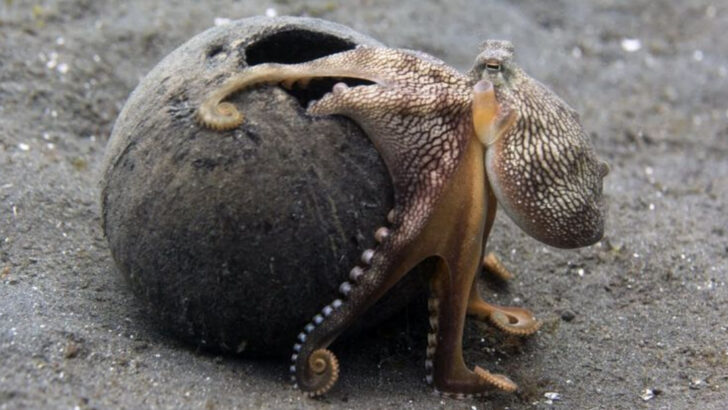Some animals don’t just survive in the wild—they bend the rules and break the mold.
We’re talking about creatures that start fires, craft tools, and pull off behavior that would make a bandit blush. These aren’t your average forest-dwellers. These are the rebels, the brainiacs, the ones who look at the laws of nature and say, “Nah, I’ll do it my way.”
One bird drops burning twigs to spark grass fires and flush out prey. Some monkeys use rocks like hammers. And a few animals? They straight-up steal, cheat, and sabotage each other like it’s a jungle soap opera.
This list isn’t about instincts—it’s about ingenuity. These 15 wild minds are out there proving that humans aren’t the only clever creatures on Earth.
Australian Firehawk
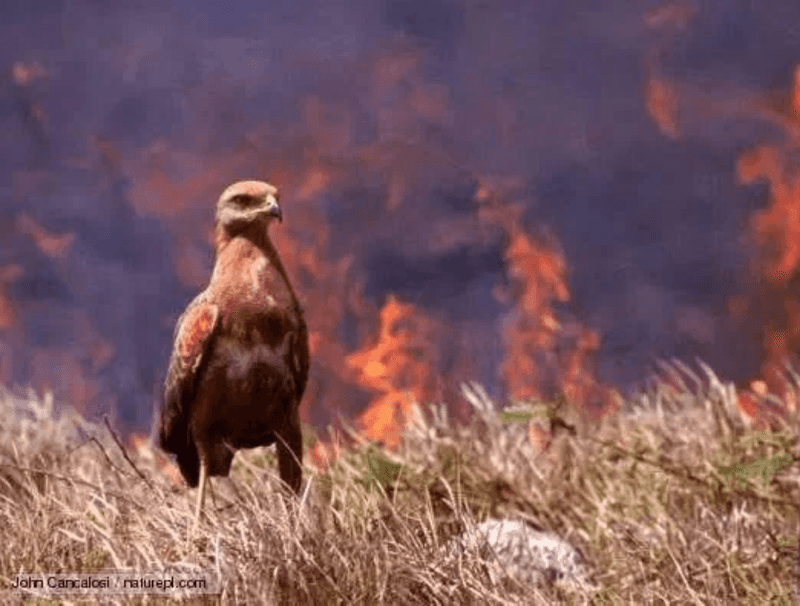
In the heart of Australia, certain birds have gained notoriety for their fiery tactics. The Australian Firehawk is known to deliberately spread wildfires. These cunning raptors pick up burning twigs and drop them in unburned areas to flush out prey. Their mastery of fire-setting helps them hunt efficiently. This remarkable behavior has been observed in black kites, whistling kites, and brown falcons. Researchers continue to study these avian fire starters, intrigued by their unique adaptation. Who knew that birds could wield fire as a hunting tool? This behavior challenges our understanding of avian intelligence and adaptability.
Chimpanzee Tool Use

Chimpanzees, our closest relatives in the animal kingdom, are known for their ingenious use of tools. In various African forests, they use sticks to extract termites from mounds, showcasing their problem-solving skills. These primates also fashion spears from branches to hunt smaller mammals. The dexterity and intelligence displayed by chimpanzees blur the line between human and animal capabilities. Their tool-using habits highlight an evolutionary link, offering insights into early human behavior. Observing chimpanzees in action reveals the deep-seated intelligence and adaptability of these incredible animals. Their resourcefulness continues to captivate researchers worldwide.
Crows As Problem Solvers
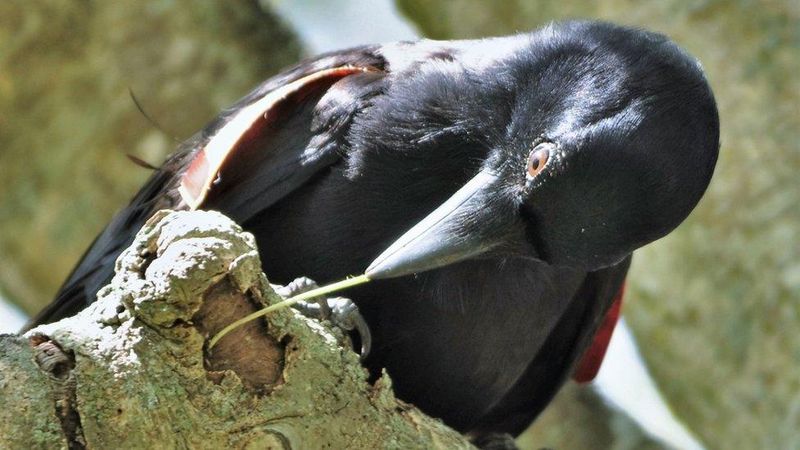
Crows, particularly the New Caledonian species, are renowned for their problem-solving prowess. These birds craft hooks from twigs and even bend wires to retrieve food from hard-to-reach places. Their intelligence rivals that of some primates, and they plan several steps ahead. In experiments, crows exhibited the ability to solve complex puzzles, a testament to their cognitive capabilities. These feathered problem solvers break the mold of avian intelligence through their inventive behaviors. Their actions not only challenge perceptions of bird brains but also inspire studies into animal cognition.
Octopus Crafting Tools
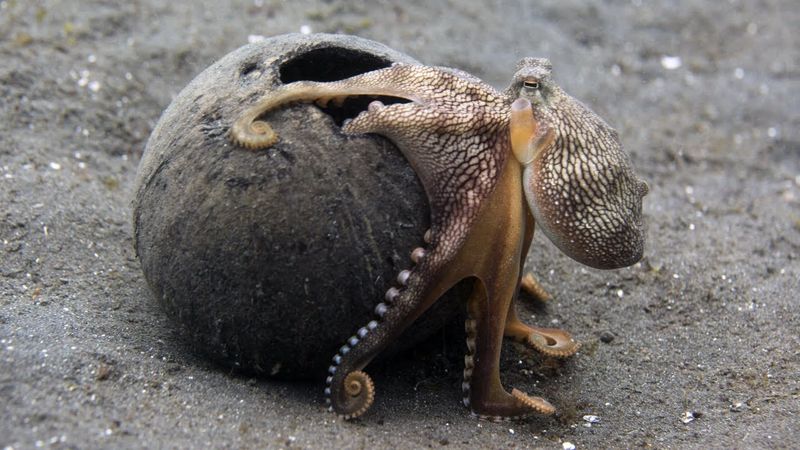
Beneath the waves, the octopus stands out not just for its alien-like appearance but also for its tool-making skills. Some octopuses collect coconut shells, assembling them into protective shelters on the ocean floor. This behavior demonstrates foresight and planning, traits that were once thought exclusive to humans. The octopus’s adaptability and intelligence make it a subject of fascination and study in marine biology. Their tool-using abilities reveal a level of sophistication rarely seen in marine life. These enigmatic creatures continue to astound with their creativity and resourcefulness beneath the sea.
Elephants and Their Empathy
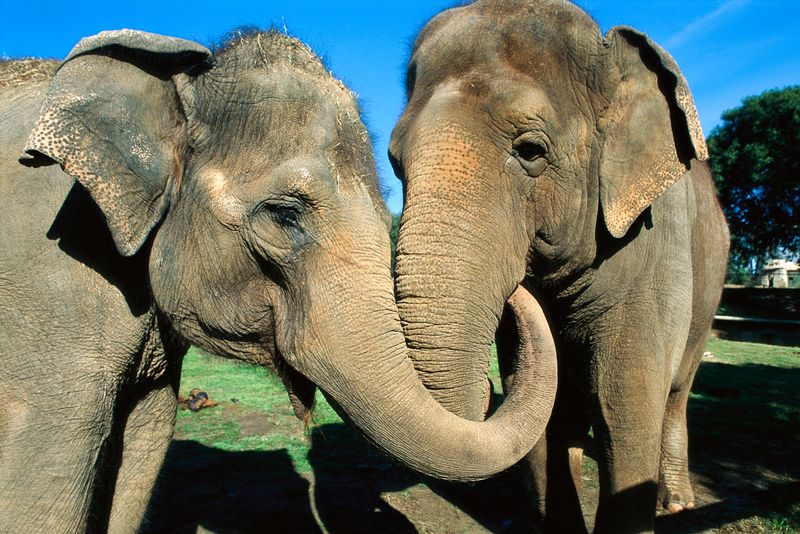
Elephants are not only known for their size but also their remarkable empathy and intelligence. In the wild, they’ve been observed using their trunks to help struggling herd members. This altruistic behavior showcases their deep emotional intelligence. Elephants have been seen breaking branches to swat flies or scratch themselves, displaying problem-solving skills. Their social structure is complex, with strong familial bonds and cooperative dynamics. Elephants challenge our understanding of animal emotions and intelligence, blurring the lines between instinct and compassion. Their actions in the wild provide a window into the emotional lives of animals.
Dolphin Tool Use
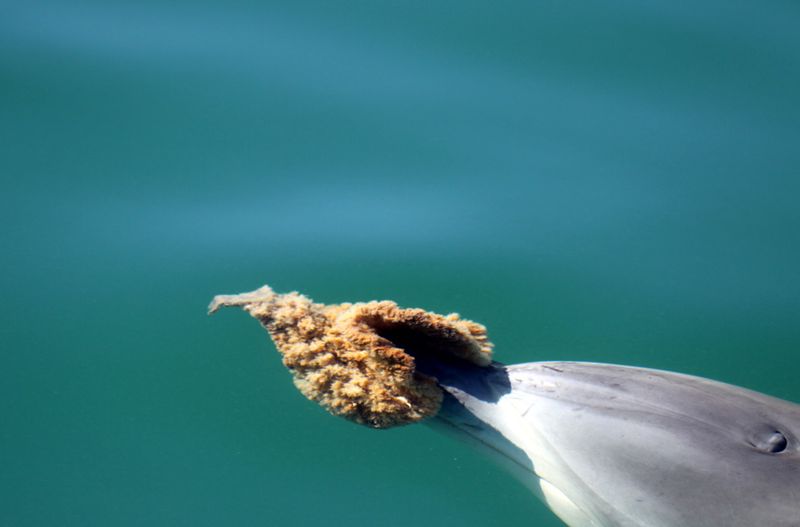
In the ocean’s depths, bottlenose dolphins exhibit an impressive form of tool use. These intelligent mammals use marine sponges on their snouts to protect themselves while foraging on the sea floor. This behavior, passed down through generations, shows cultural learning. Dolphins are also known for their complex communication and social structures, further emphasizing their intelligence. Their use of tools provides insights into the cognitive capabilities of marine life. Dolphins continue to surprise researchers with their innovative strategies and social behaviors, solidifying their reputation as one of the ocean’s most intelligent inhabitants.
Firefly Squid Bioluminescence
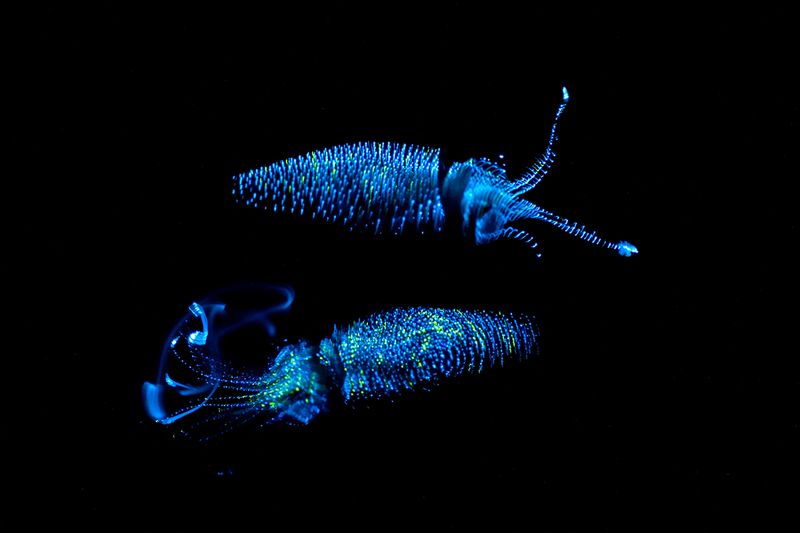
The firefly squid illuminates the ocean depths with its bioluminescent display. These tiny cephalopods use light to communicate and evade predators. Their dazzling blue glow is not just for show; it’s a survival tactic. Firefly squids synchronize their light patterns to confuse predators, creating a mesmerizing underwater spectacle. This bioluminescence is a testament to evolution’s creativity in survival. The light show is a crucial part of their life cycle, drawing mates and deterring foes. Firefly squids captivate marine biologists and onlookers alike with their shimmering beauty and strategic use of light.
Beavers Building Dams
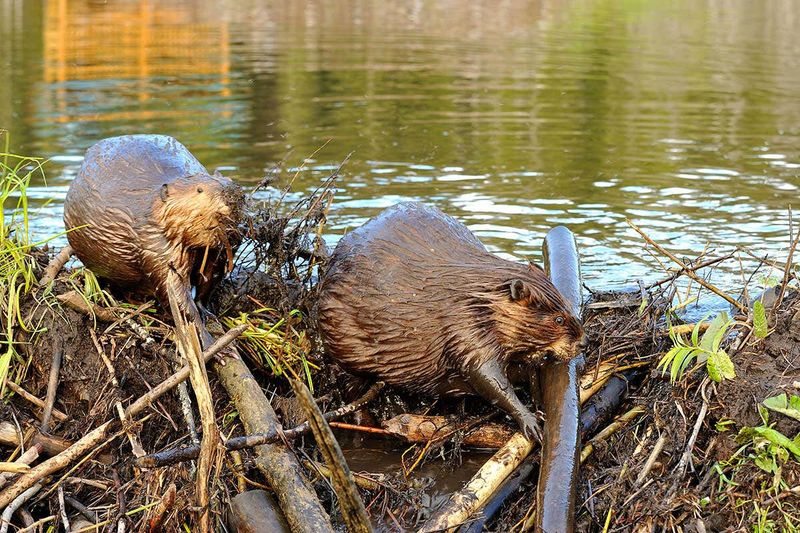
Beavers are nature’s engineers, renowned for their dam-building prowess. These industrious rodents alter landscapes by constructing dams with branches and mud, creating ponds that benefit entire ecosystems. Their engineering skills are crucial for water management in the wild. Beavers’ constructions create safe habitats for various species, showcasing their environmental impact. Their ability to modify their surroundings demonstrates an understanding of hydrodynamics. Beavers’ work in the wild has inspired human engineering and environmental conservation efforts. Their contributions to ecosystems highlight the interconnectedness of nature and the remarkable capabilities of non-human architects.
Capuchin Monkeys Cracking Nuts

Capuchin monkeys, known for their dexterous fingers, engage in a unique form of tool use. In tropical forests, they select specific rocks to crack open nuts, showcasing their problem-solving abilities. Their precision and patience in nut-cracking mirror human tool use. This behavior reflects their intelligence and adaptability in the wild. Capuchins’ actions challenge the notion that humans are the only creatures capable of tool innovation. Observing these primates in action provides insights into early human behavior and the evolution of tool use. Their nut-cracking skills continue to intrigue researchers and primate enthusiasts alike.
Keas and Their Curiosity
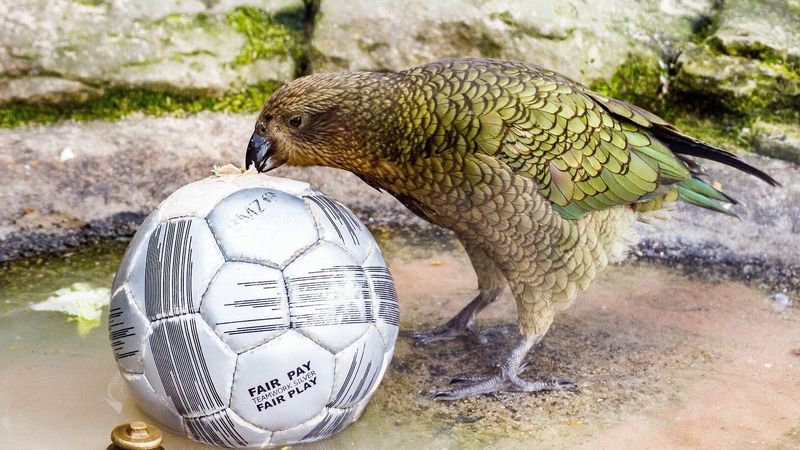
Keas, the mischievous parrots of New Zealand, are renowned for their inquisitive nature. These birds investigate everything with gusto, from backpacks to car parts. Their curiosity often leads to playful antics, which can sometimes cause trouble for unsuspecting humans. Keas’ intelligence is evident in their problem-solving abilities and social interactions. Their playful nature and fearless exploration make them both a delight and a challenge for those who encounter them. Observing keas in their natural habitat reveals the importance of curiosity in animal behavior and adaptation. These charismatic parrots continue to captivate locals and visitors alike.
Ants Farming Fungi
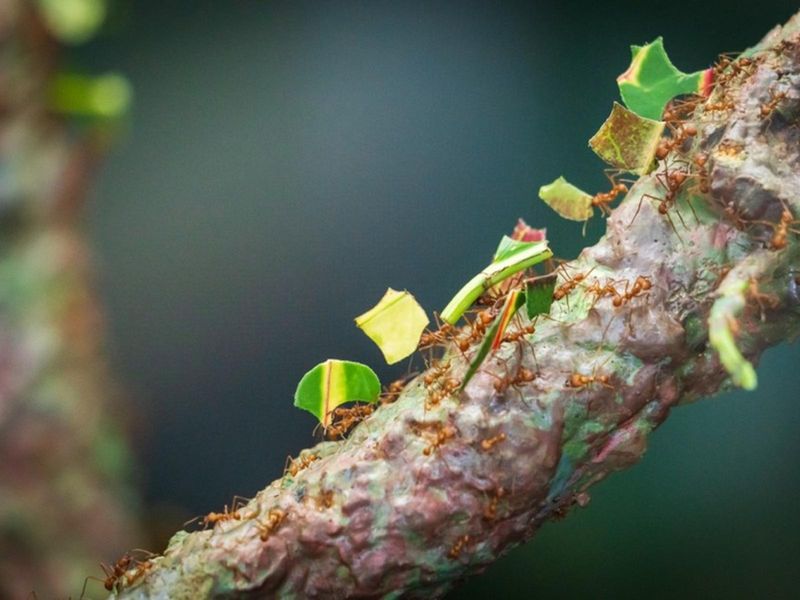
Leafcutter ants are the farmers of the insect world, cultivating fungi for sustenance. These industrious ants harvest leaves, using them to grow fungus gardens underground. Their agricultural practices demonstrate a sophisticated form of farming. Leafcutter ants’ colonies function as well-organized societies, with distinct roles for each member. This mutualistic relationship between ants and fungi showcases evolution’s ingenuity. Observing leafcutter ants provides insights into complex social structures and cooperative behaviors. Their farming techniques have inspired studies in sustainability and ecosystem management. These tiny farmers play a vital role in rainforest ecosystems, contributing to biodiversity.
Orangutans Using Leaves
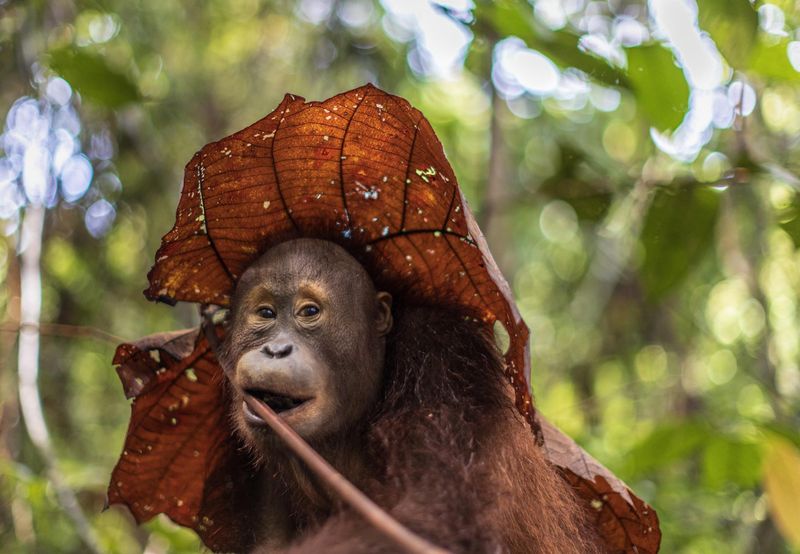
In the rain-soaked forests of Borneo and Sumatra, orangutans display a clever use of natural tools. These great apes use large leaves as umbrellas to shield themselves from the rain. Their ingenuity extends to using sticks to probe for honey or insects. Orangutans’ tool-using behaviors highlight their intelligence and adaptability in their lush habitat. These primates’ actions offer a glimpse into the cognitive capabilities shared with humans. Observing orangutans in the wild underscores the importance of conservation efforts to protect these intelligent animals and their rainforest homes.
Sea Otters Using Stones

In the chilly waters of the North Pacific, sea otters display a charming form of tool use. These marine mammals use stones to crack open shellfish, a behavior passed down through generations. Their use of tools demonstrates not only intelligence but also cultural learning. Sea otters are integral to their habitats, maintaining kelp forest ecosystems. Their tool-using habits provide insights into the cognitive abilities and traditions within animal communities. Observing sea otters in action reveals the deep connection between animal behavior and environmental health. They continue to enchant wildlife enthusiasts with their playful antics.
Ravens Solving Puzzles
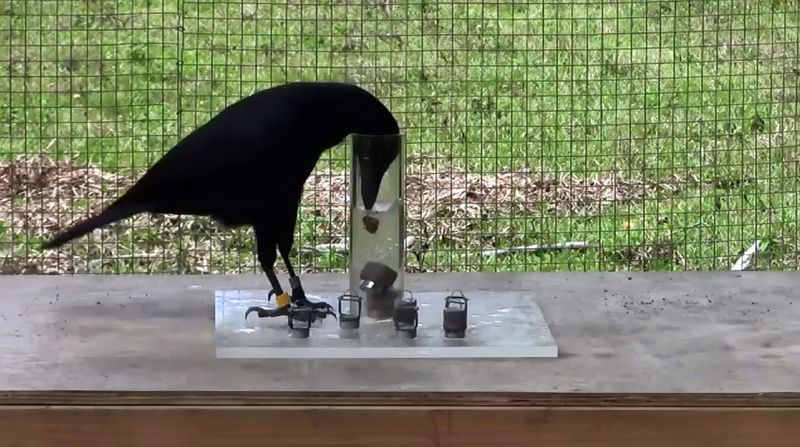
Ravens, akin to crows, are celebrated for their intelligence and problem-solving skills. These birds tackle intricate puzzles and employ tools like sticks to access food. Their cognitive abilities rival those of primates, challenging the conventional view of avian intelligence. Ravens’ problem-solving prowess is evident in their ability to plan and adapt. Their actions in the wild and in research settings have provided valuable insights into animal cognition. Ravens’ intelligence and playful nature make them a subject of fascination for ornithologists and bird enthusiasts alike, pushing the boundaries of what we know about animal minds.
Bonobos Using Spears

Bonobos, known for their peaceful nature, display an intriguing form of tool use. In some regions, they’ve been observed crafting spears to fish in rivers, demonstrating foresight and manual dexterity. This behavior reflects their intelligence and adaptability in their environment. Bonobos’ tool use parallels that of early humans, providing insights into evolutionary history. Their peaceful social structures and cooperative behaviors further emphasize their uniqueness among primates. Observing bonobos in the wild offers a window into the roots of human evolution and the shared traits among primates. Their actions continue to intrigue researchers and primatologists.

